Serim Ryou
BKinD-3D: Self-Supervised 3D Keypoint Discovery from Multi-View Videos
Dec 14, 2022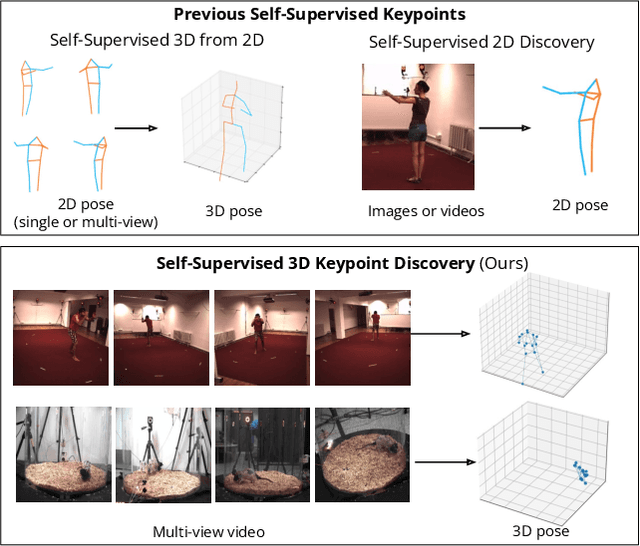
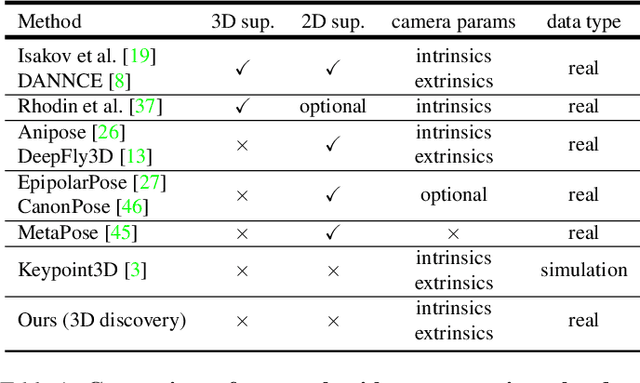
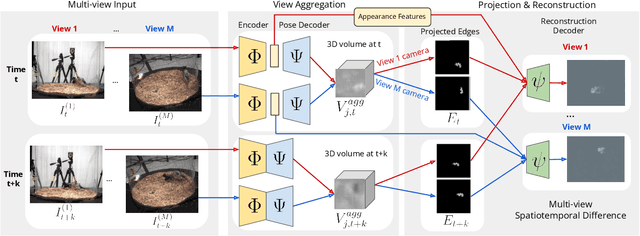
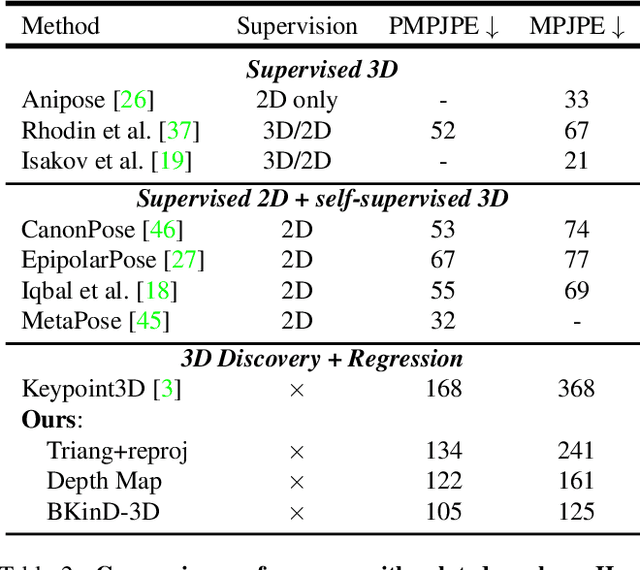
Abstract:Quantifying motion in 3D is important for studying the behavior of humans and other animals, but manual pose annotations are expensive and time-consuming to obtain. Self-supervised keypoint discovery is a promising strategy for estimating 3D poses without annotations. However, current keypoint discovery approaches commonly process single 2D views and do not operate in the 3D space. We propose a new method to perform self-supervised keypoint discovery in 3D from multi-view videos of behaving agents, without any keypoint or bounding box supervision in 2D or 3D. Our method uses an encoder-decoder architecture with a 3D volumetric heatmap, trained to reconstruct spatiotemporal differences across multiple views, in addition to joint length constraints on a learned 3D skeleton of the subject. In this way, we discover keypoints without requiring manual supervision in videos of humans and rats, demonstrating the potential of 3D keypoint discovery for studying behavior.
Self-Supervised Keypoint Discovery in Behavioral Videos
Dec 09, 2021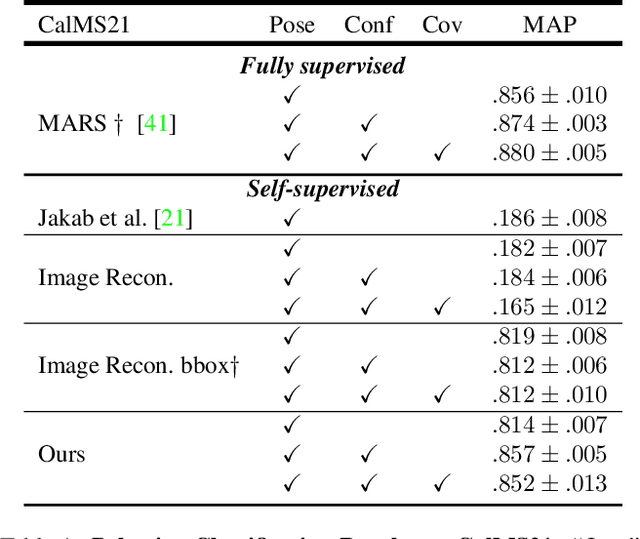
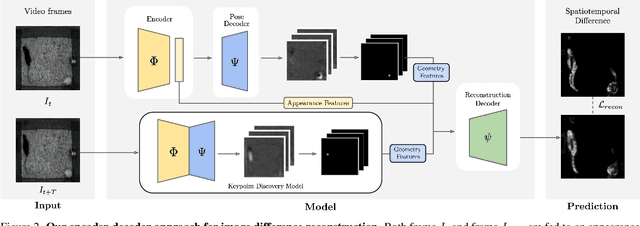
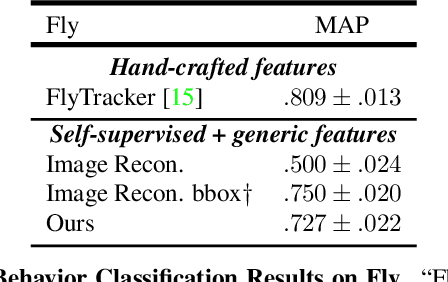
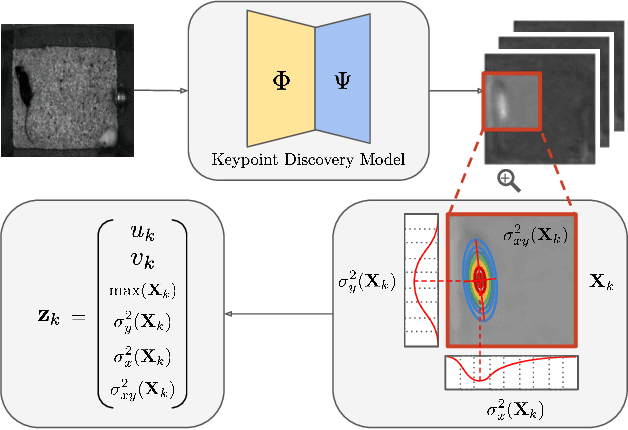
Abstract:We propose a method for learning the posture and structure of agents from unlabelled behavioral videos. Starting from the observation that behaving agents are generally the main sources of movement in behavioral videos, our method uses an encoder-decoder architecture with a geometric bottleneck to reconstruct the difference between video frames. By focusing only on regions of movement, our approach works directly on input videos without requiring manual annotations, such as keypoints or bounding boxes. Experiments on a variety of agent types (mouse, fly, human, jellyfish, and trees) demonstrate the generality of our approach and reveal that our discovered keypoints represent semantically meaningful body parts, which achieve state-of-the-art performance on keypoint regression among self-supervised methods. Additionally, our discovered keypoints achieve comparable performance to supervised keypoints on downstream tasks, such as behavior classification, suggesting that our method can dramatically reduce the cost of model training vis-a-vis supervised methods.
Weakly Supervised Keypoint Discovery
Sep 28, 2021



Abstract:In this paper, we propose a method for keypoint discovery from a 2D image using image-level supervision. Recent works on unsupervised keypoint discovery reliably discover keypoints of aligned instances. However, when the target instances have high viewpoint or appearance variation, the discovered keypoints do not match the semantic correspondences over different images. Our work aims to discover keypoints even when the target instances have high viewpoint and appearance variation by using image-level supervision. Motivated by the weakly-supervised learning approach, our method exploits image-level supervision to identify discriminative parts and infer the viewpoint of the target instance. To discover diverse parts, we adopt a conditional image generation approach using a pair of images with structural deformation. Finally, we enforce a viewpoint-based equivariance constraint using the keypoints from the image-level supervision to resolve the spatial correlation problem that consistently appears in the images taken from various viewpoints. Our approach achieves state-of-the-art performance for the task of keypoint estimation on the limited supervision scenarios. Furthermore, the discovered keypoints are directly applicable to downstream tasks without requiring any keypoint labels.
Graph Neural Networks for the Prediction of Substrate-Specific Organic Reaction Conditions
Jul 09, 2020


Abstract:We present a systematic investigation using graph neural networks (GNNs) to model organic chemical reactions. To do so, we prepared a dataset collection of four ubiquitous reactions from the organic chemistry literature. We evaluate seven different GNN architectures for classification tasks pertaining to the identification of experimental reagents and conditions. We find that models are able to identify specific graph features that affect reaction conditions and lead to accurate predictions. The results herein show great promise in advancing molecular machine learning.
Anchor Loss: Modulating Loss Scale based on Prediction Difficulty
Sep 24, 2019



Abstract:We propose a novel loss function that dynamically rescales the cross entropy based on prediction difficulty regarding a sample. Deep neural network architectures in image classification tasks struggle to disambiguate visually similar objects. Likewise, in human pose estimation symmetric body parts often confuse the network with assigning indiscriminative scores to them. This is due to the output prediction, in which only the highest confidence label is selected without taking into consideration a measure of uncertainty. In this work, we define the prediction difficulty as a relative property coming from the confidence score gap between positive and negative labels. More precisely, the proposed loss function penalizes the network to avoid the score of a false prediction being significant. To demonstrate the efficacy of our loss function, we evaluate it on two different domains: image classification and human pose estimation. We find improvements in both applications by achieving higher accuracy compared to the baseline methods.
 Add to Chrome
Add to Chrome Add to Firefox
Add to Firefox Add to Edge
Add to Edge